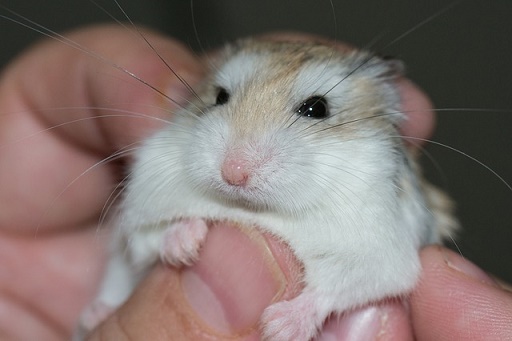Hamsters are cute little animals that can be found in various households. They possess magnificent skin colors which can be a decent piece of attractions for pet lovers. But these delicate animals need proper care and nourishment for growth and survival and so the question of how long do hamsters live must deserve your attention considerably. They normally live for 1-3 years. This article would serve you with essential guidelines for enhancing the longevity of your pet hamsters.
How Long Do Hamsters Live – The Factors
A lot of times, your pet will be completely reliant on you for its care. However, there is no fixed amount of time that your hamster will live for. There are different factors that can affect the lifespan of your pet.
On average, hamsters live for 1-3 years. This is just a rough estimate. Like other animals, some hamsters may live longer and some much shorter time.
There are many factors that can affect the life span of your pet hamster:
- Genetics
- Species
- Diet
- Living environment
- Exercise
- Quality of care
- Illness
How Long Do Different Species Of Hamsters Live
These are just average estimates for different species. Like I mentioned earlier, every hamster is different.
Winter White Russian Dwarf Hamster: 1.5 to 2 years
Chinese Hamster: 1.5 to 2 years
Campbell’s Dwarf Hamster: 2 years
Syrian Hamster: 2 to 2.5 years
Roborovski Hamster: 3 to 3.5 years
How To Make Your Hamster Live Longer
- Feeding them a healthy diet
- Giving them a good and clean home
- Encouraging them to exercise
- Looking out for any signs of illnesses and diseases and giving them a quick treatment when necessary
- Cages: The suitable dimension of cages for hamsters are 19 x 19 inches square and 6 inches high with solid ground base. Avoid wire meshing for the floor of the cage as their feet are quite light and can be severely injured because of it. There are different types of cages available such as plastic, glass and wire mesh.
- Bedding: Hamsters prefer to burrow. The bedding must not be deep. Favorable selections of bedding are wood shavings and paper pellets in recycled forms. The bedding must be changed every week and special emphasis must be provided on the toilet area of the bed which must be sanitized properly.
- Nesting materials: Hamsters like to stay in a nesting house where they can enjoy undisturbed sleep during the day. Their house must made out of materials like cotton bedding, light paper towels, facial tissues and other soft items. These materials must be properly sanitized for four to six weeks. This would definitely enhance the life span of your cute little pets.
- Temperature: Hamsters are very responsive hibernators and they become lazy when the temperature slips to 60 degrees Fahrenheit. When the temperature reduces further, these hamsters show symptoms of reduced breathing. They will also curl up considerably and enter into a heavy slumber when they hardly move at all. As this process involves series of biological transformations, owners must deal with it carefully. Try to increase the room temperature about 5 degrees in every eight or six hours until the temperature reaches 68 to 75 degrees Fahrenheit. However, hamsters cannot withstand high temperatures either so keep it at optimum level. Place the cage in the cooler place for the summer months.
- The main advantage of a wire cage is that the hamster uses it for a climbing exercise. Horizontal bars for such cages must be ¾ to ½ inches apart. Suitable wire cages contain detachable base for simple cleaning.
- Glass cages do have the benefit of being smoothly sanitized but contain poor ventilation system and do not enable the hamsters to freely exercise.
- Plastic cages normally comprised of many built-in tunnels and toys but are quite tough to clean and have poor ventilation system.
- Exercise and toys: Hamsters prefer to burrow and chew. This would provide you clues to the appropriate exercise, accessories and toys for your beloved pets. Usually a wooden piece of 4 x 4 inches works perfect when it has big holes drilled in. This would provide multiple tunnels for your hamsters to enjoy. Hamsters are also playful animals and like to chew and play with cardboard tubes from paper towels and toilet paper rolls. You can also purchase special chewing toys for your pet from the leading pet supply stores. Hamster wheel is an ideal toy for your pet but its shrilling noise would definitely keep you awake at night.
Once Released In The Wilderness: What Is The Survival Rate Of The Hamster?
If you release your pet hamsters in the wild, they may die slowly and painfully. When thy are brought up at home, they would not be able to withstand the challenges and difficulties of the wildlife outside of your home. Your hamsters, once released in the wild, can be consumed by other large animals or they will be victims to consuming parasites. Hamsters have no resistance for such unhygienic digestions. Being brought up in the comfortable room temperature, these poor creatures would not be able to withstand harsh outside temperatures. They would be unable to dig up holes for shelter.
References:
http://thehamsterhouse.com/hamster-life-span/
http://www.peteducation.com/article.cfm?c=18+1799&aid=1688
https://www.aspca.org/pet-care/small-pet-care/hamster-care






Leave a Comment